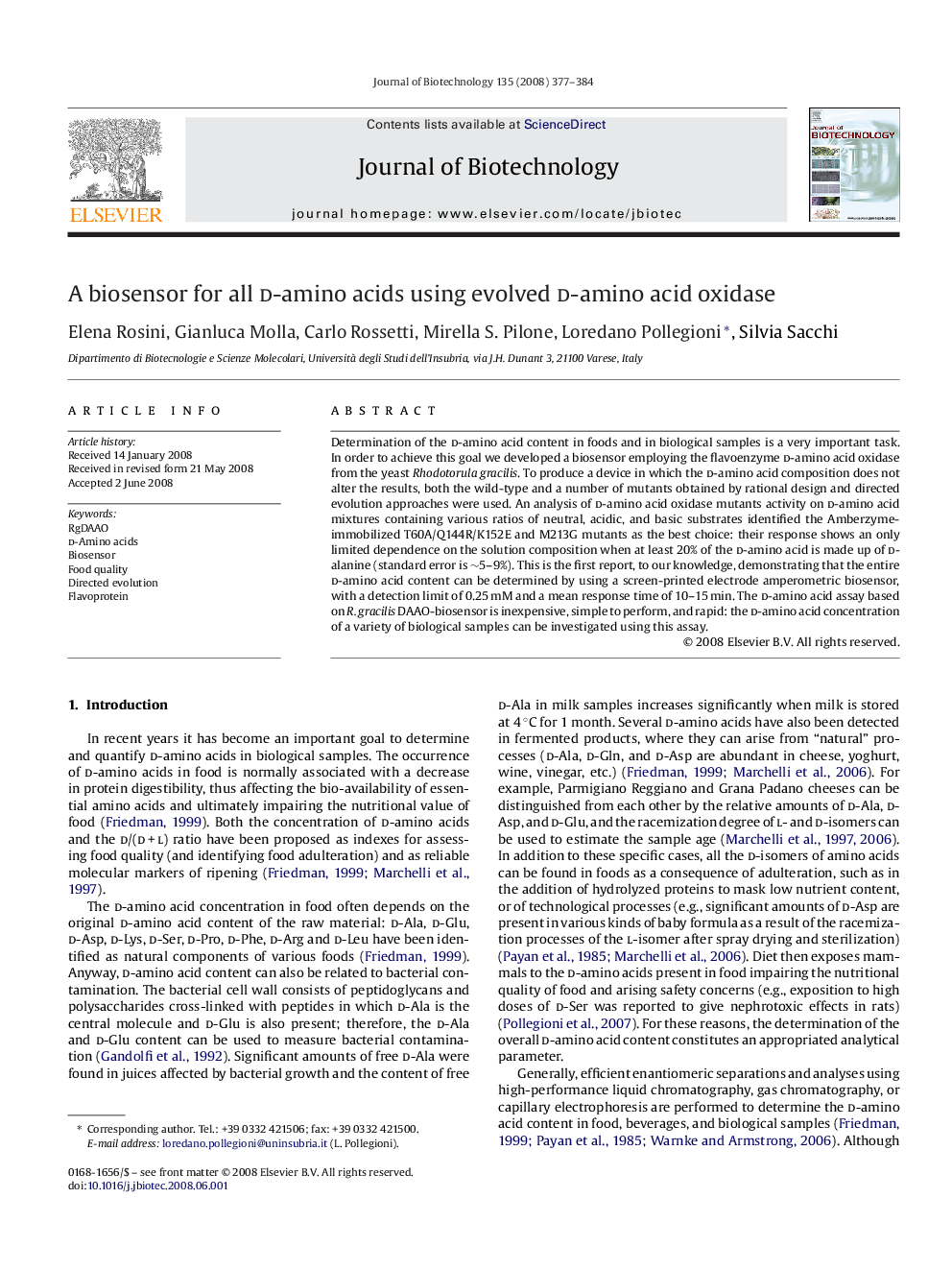| Article ID | Journal | Published Year | Pages | File Type |
|---|---|---|---|---|
| 24918 | Journal of Biotechnology | 2008 | 8 Pages |
Determination of the d-amino acid content in foods and in biological samples is a very important task. In order to achieve this goal we developed a biosensor employing the flavoenzyme d-amino acid oxidase from the yeast Rhodotorula gracilis. To produce a device in which the d-amino acid composition does not alter the results, both the wild-type and a number of mutants obtained by rational design and directed evolution approaches were used. An analysis of d-amino acid oxidase mutants activity on d-amino acid mixtures containing various ratios of neutral, acidic, and basic substrates identified the Amberzyme-immobilized T60A/Q144R/K152E and M213G mutants as the best choice: their response shows an only limited dependence on the solution composition when at least 20% of the d-amino acid is made up of d-alanine (standard error is ∼5–9%). This is the first report, to our knowledge, demonstrating that the entire d-amino acid content can be determined by using a screen-printed electrode amperometric biosensor, with a detection limit of 0.25 mM and a mean response time of 10–15 min. The d-amino acid assay based on R. gracilis DAAO-biosensor is inexpensive, simple to perform, and rapid: the d-amino acid concentration of a variety of biological samples can be investigated using this assay.
